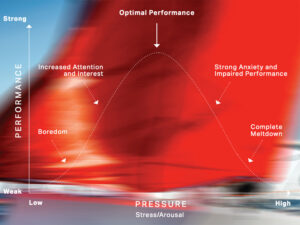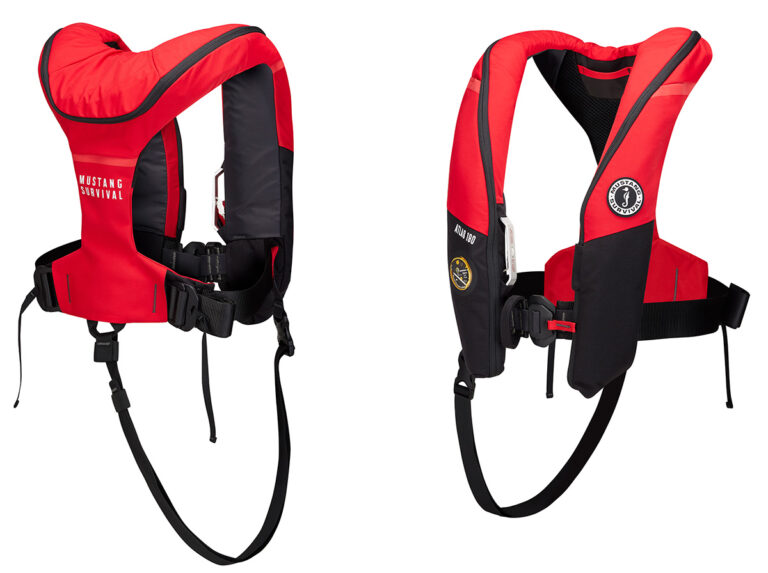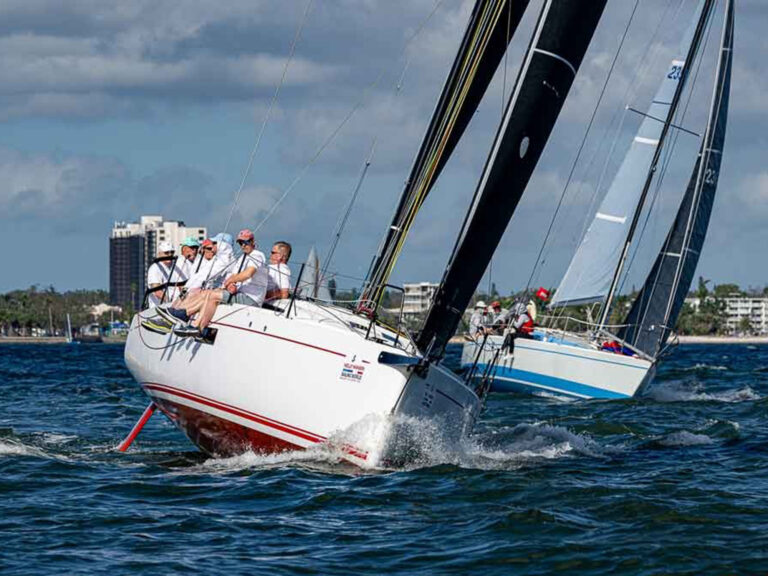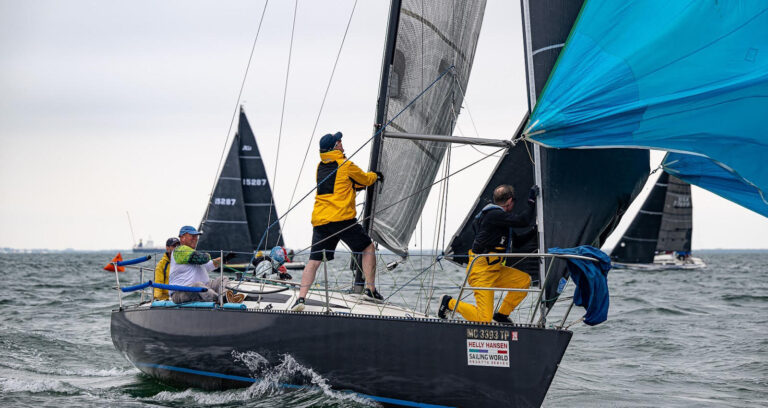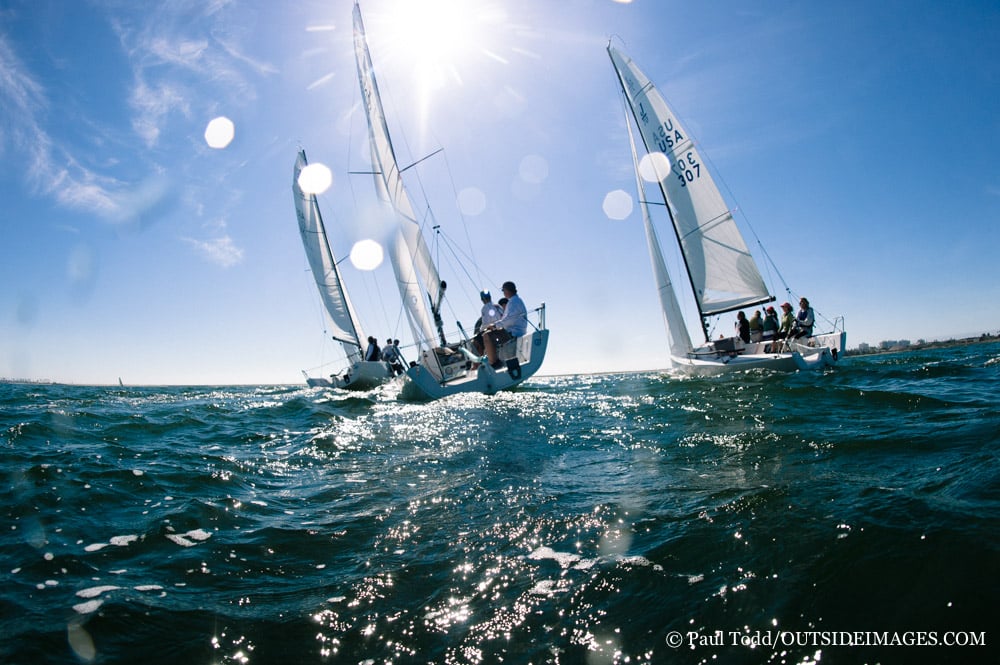
Practice, Practice, Practice!” This is the common theme among all sports and is equally true for sailing. “But, who has time to practice? Who has the chance to get organized, get a coach?” No more “buts” about it. The simple fact of the matter is that practicing is much easier than people think, and the amount of time you practice is directly proportional to the amount of success you earn.
Sail Against the Best Possible
One of the easiest ways to improve is to sail against people who are equal to or better than you. In many cases its hard to find sailors better than you who are willing to spend time and practice with you. Frequently, the best way to sail against better sailors is to race in big events. Going to national, state, or district level events can be great practice. For the less experienced sailor going to a big event may be the best “practice” that he or she can get. Sure, sailing in your local yacht club or interclub event may be fun because youre winning, but the only way to increase your level of ability is to get beat up by skippers better than you.
I can relate my story of 1998 CORK, the Canadian Olympic Training Regatta at Kingston, Ontario. I sailed with my team as a 15 year old in the YouthFestival, held annually before the regatta. There were about 85 youth Laser sailors on the line and, to my own amazement, I went out and won all three races held. I came out of the event confident and cocky, ready to take on the “big boys” at CORK. As it turned out the “big boys” included names like Robert Scheidt, at that point a three-time World Champion and Olympic Gold medalist. It blew hard, and I was glad to make gold fleet much less 46th place in the event. During one race, the breeze came in from the west at 20 plus knots. Sailing upwind to the second windward mark of three beats, I looked over my shoulder and saw Scheidt bearing down hard on me, out on my starboard hip. I rounded the top mark only to watch Schiedt sail upwind 50 more yards to the finish. At that point, I realized I had much more to learn.
After relating this moment to my teammates, we traveled home to the lighter regions of Southern California and decided to get our act together and sail hard. I was extremely lucky to have three teammates with whom I could sail both standard and Radial-rigged Lasers and practice with on a regular basis. The first months after summer are always difficult for youth sailors and adults alike to carry their training into the “off-season.” But we decided to sail at least once a week and maybe more. The four of us, almost equal in speed and skill, practiced on and off until the beginning of winter and the start of the double-handed high school season. What we found was that sailing together after such good and recent experiences, was that we could go through all the problems that we had and things we needed to work on and smooth out the rough spots before we put up our hats for the “off-season.” An important aspect of this sailing was that we sailed only for about two hours after school and without a coach.




